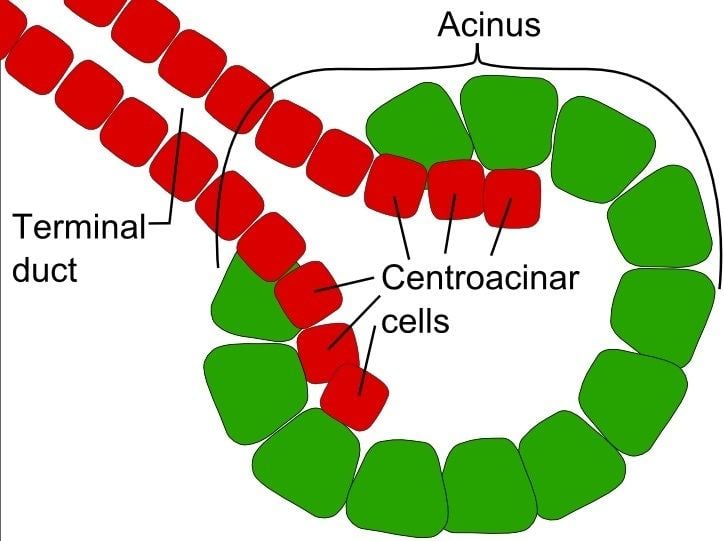Latin glandula exocrina FMA 9596 | Code TH H2.00.02.0.03014 | |
 | ||
Exocrine glands are glands that produce and secrete substances onto an epithelial surface by way of a duct. Examples of exocrine glands include sweat, salivary, mammary, ceruminous, lacrimal, sebaceous, and mucous. Exocrine glands are one of two types of glands in the human body, the other being endocrine glands, which secrete their products directly into the bloodstream. The liver and pancreas are both exocrine and endocrine glands; they are exocrine glands because they secrete products—bile and pancreatic juice—into the gastrointestinal tract through a series of ducts, and endocrine because they secrete other substances directly into the bloodstream.
Contents
By structure
Exocrine glands contain a glandular portion and a duct portion, the structures of which can be used to classify the gland.
By method of excretion
Exocrine glands are named apocrine glands, holocrine glands, or merocrine glands based on how their products are excreted.
